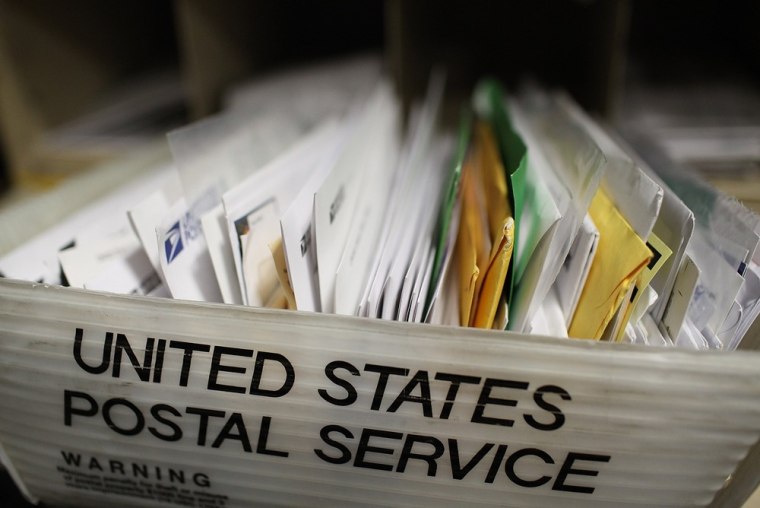As if the U.S. Postal Service weren’t already in enough financial trouble, a growing number of startups are about to make its future even more uncertain. They’re trying to lure one of its main revenue sources — the nearly 48 billion bills, statements, account notices and offers that companies send to households every year — into the electronic realm. That could make the USPS’s $3.1 billion third-quarter loss seem like small change. The companies aim to do so with secure online services that, unlike e-mail, are inaccessible to spammers and allow consumers to receive, organize and respond to important correspondence all in one digital place. Matt Swain, associate director at research firm InfoTrends, calls the technology “a potential game-changer.”
Zumbox, a Los Angeles firm launched in December 2009, was the first digital mail service out of the gate. With $17.7 million in venture funding from private investors including former Walt Disney Chief Executive Officer Michael D. Eisner, the company is creating a digital mailbox for every street address in the country. (Ironically, it’s using a freely available USPS database to do so.) When customers sign up, Zumbox mails them a PIN which they must use to register their account, a step that verifies the link between the virtual Zumbox and the real-world address. That assures mail senders that information is going to the right household. Users can then access their Zumbox, free of charge, to receive and store electronic mail, pay bills and opt out of paper mailings. “There’s sort of an inevitability about the migration of the mail to digital,” says Zumbox CEO John Payne.
The inevitable can’t come quickly enough for some companies. In 2010, for the first time, households reported paying more bills electronically than by mail, according to the most recent USPS Household Diary Study. But only about 15 percent of consumer bills and statements are delivered exclusively online.
Bloomberg Businessweek: The U.S. Postal Service nears collapse
Businesses spend about $30 billion each year printing, collating, and mailing documents and a typical bill costs a company anywhere from 70¢ to a dollar to deliver. Zumbox charges senders as little as 20¢. “Mailing is all about the cost of postage,” says Frank Delfer, chief technology officer of DST Output, an El Dorado Hills, Calif., company that processes 2.3 billion paper bills, statements and financial documents annually for large companies. DST started offering Zumbox to its customers in early August. “Digital postal mail lets companies save money compared to the way they’re doing it today.”
Zumbox already has competition. In January, Pitney Bowes, a maker of postage meters and machines, announced plans to offer a service called Volly that, like Zumbox, will create a digital mailbox tied to a customer’s mailing address. Manilla, a startup owned by Hearst that launched in February, characterizes itself as a free personal account management service. It can’t actually receive mail as Zumbox does, but once users give Manilla the credentials for their business accounts, the site provides an organized view of all their bills, finances, travel rewards programs and subscriptions, along with payment reminders. Doxo, begun in October 2010 and backed in part by Bezos Expeditions, which manages Amazon.com founder Jeff Bezos’s personal investments, operates similarly to Manilla but also allows users to upload and store documents.
Bloomberg Businessweek: Mail delivery may stop in 2012 unless Congress frees up cash
All the services are free to consumers and make money by charging mailers a per-document fee when customers agree to paperless billing. They also promise to do away with junk mail, since spammers won’t be able to infiltrate the gated electronic system set up by the digital mail services. That doesn’t mean the mailboxes will be entirely annoyance-free. Zumbox says it plans to allow verified marketers to send mail — otherwise known as spam — but that customers can filter those messages and opt out of unwanted marketing. And while no online service is completely impervious to being hacked, the digital mail providers have invested in the same level of encryption and security that banks use.
Right now, the various digital mailbox services are rushing to form partnerships with companies that send out bills and statements, while building up their user base. Manilla is taking out two-page spreads in Hearst magazines such as Cosmopolitan and Redbook, and Zumbox has launched a million-dollar sweepstakes to get people to sign up and refer friends. Pitney Bowes has promised to commit 5¢ to 10¢ per share, or about $20 million, for market development of Volly.
Bloomberg Businessweek: Why the USPS lags the rest
Swain, the InfoTrends analyst, expects more companies to jump into the digital mailbox business. Digital postal mail has already caught on in Finland and Denmark, he says, and New Zealand’s postal service recently licensed Zumbox’s platform. The country plans to roll out digital mail to 1.45 million households as early as year’s end. If the trend holds in the U.S., then in a few years’ time, the USPS may have nothing to deliver other than the mail no one really needs.
The bottom line: Digital mail services are targeting the 48 billion bills, statements, and financial documents sent by companies through USPS every year.
